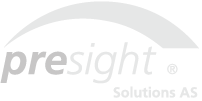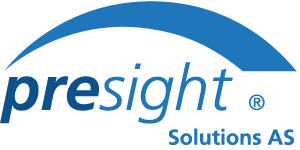Digitalising risk management is a key step towards managing safety risks efficiently and comes with many benefits.
But before we dive in, let us introduce you to the key features of our Barrier Monitor™ solution.
Presight Barrier Monitor™ is a tool used to monitor and visualise safety barriers in the offshore energy industry. The digital solution can help safety and operational leaders to manage risks, ensure safety across all assets, and get a holistic view of safety-critical barriers.
It gathers information from different systems to provide an overview of the status of technical, operational, and organisational barriers related to planning, operating, and maintaining assets. This allows users to take action to prevent and mitigate unwanted events and risks. The tool is used for decision making and to communicate barrier awareness. This results to better HSEQ awareness and improved safety levels.
Here are the top 7 benefits of digitalising your risk management strategy with Barrier Monitor:
1. Your assets are safe and you know it:
By using a solution such as Presight Barrier Monitor™, management can gain a holistic view of safety critical barriers and major accident hazards. The solution provides safety and operational managers with a Bow-tie perspective, covering all barrier elements that play a part in realising the barrier function. Barrier elements include technical, operational, and organisational measures. This allows managers to monitor changes to the risk picture and make informed decisions on a day-to-day basis. By capturing early deviations, safety and operational managers can prevent barrier failure and potential accidents, ensuring the safety of employees and assets.

2. Saved time thus saved costs and improved efficiency:
Handling manual data input and excel spreadsheets is not only time consuming, but it decreases data quality due to human error. Barrier Monitor™ can retrieve data from various systems, including HR systems, deviation systems, inhibit logs, permit to work systems, maintenance, asset management, and other data sources. By reducing manual data input and improving data quality, the solution can save time and resources, leading to cost savings and improved efficiency.
3. Improved data accuracy and quality:
With data integrated from different data sources, the solution ensures the data is up-to-date and accurate, reducing the risk of errors. Regular quality assurance checks further assure data accuracy across departments. This allows safety and operational managers to easily identify safety-critical barriers that require immediate attention. As a result, there can be an improvement in reputation, leading to increased trust from business partners.
4. Simplified reporting and increased collaboration across departments:
The solution allows safety and operational managers to easily generate reports or access dynamic data in dashboards, providing insight into safety performance and identifying areas for improvement. By sharing data across departments and with external stakeholders, collaboration is fostered. Everyone has access to the same accurate information, thus saving time and increasing efficiency.

5. Ensure effective risk management and decision-making:
Barrier Monitor™ considers both preventative barriers to mitigate risk and corrective barriers to reduce them, covering all barrier elements that play a part in realizing the barrier function. This approach enables safety and operational managers to continuously monitor changes to the risk picture, providing a detailed risk picture that supports informed decision-making. By prioritising risk management activities based on the level of risk and potential consequences, managers can ensure effective risk management as well as ensure the safety of their employees and assets.
6. Monitor the trends and forecast of the risk picture:
Barrier Monitor™ can monitor trends and forecast the risk picture, providing a comprehensive overview of the risk status. By analysing the trend, organisations can predict the development of the risk picture and take necessary measures to prevent negative trends from occurring. This forecasting of the risk picture allows for effective resource allocation and improved safety performance. In addition, it allows for early identification of potential deviations, informed decision-making, and accident prevention.

7. Compliance and holistic risk management:
Barrier Monitor™ helps companies comply with industry and government regulations by integrating human factors with technical elements, providing a holistic view of barrier functions. This approach includes practical measures such as competence interval, external training, staff requirements, preparedness, and workload. By addressing human factors and performance standards, Barrier Monitor™ ensures compliance and willingness to follow the measures put in place for safe operations for example the regulations put forth by Petroleum Safety Authority in Norway. Barrier Monitor™ reduces the time and effort required to maintain compliance with industry and government regulations, resulting in a positive impact on license to operate and finance in the long run.

In conclusion, digitalising risk management of your safety critical barriers provides numerous benefits to companies. These benefits include cost savings, improved efficiency and accuracy, simplified reporting, and increased collaboration. Digitalisation also enables companies to gain a holistic overview of safety critical barriers and major accident hazards, and to engage in effective risk management and decision-making. By implementing a digital risk management strategy, companies can enhance both efficiency and safety, ensuring the protection of their employees and assets.

